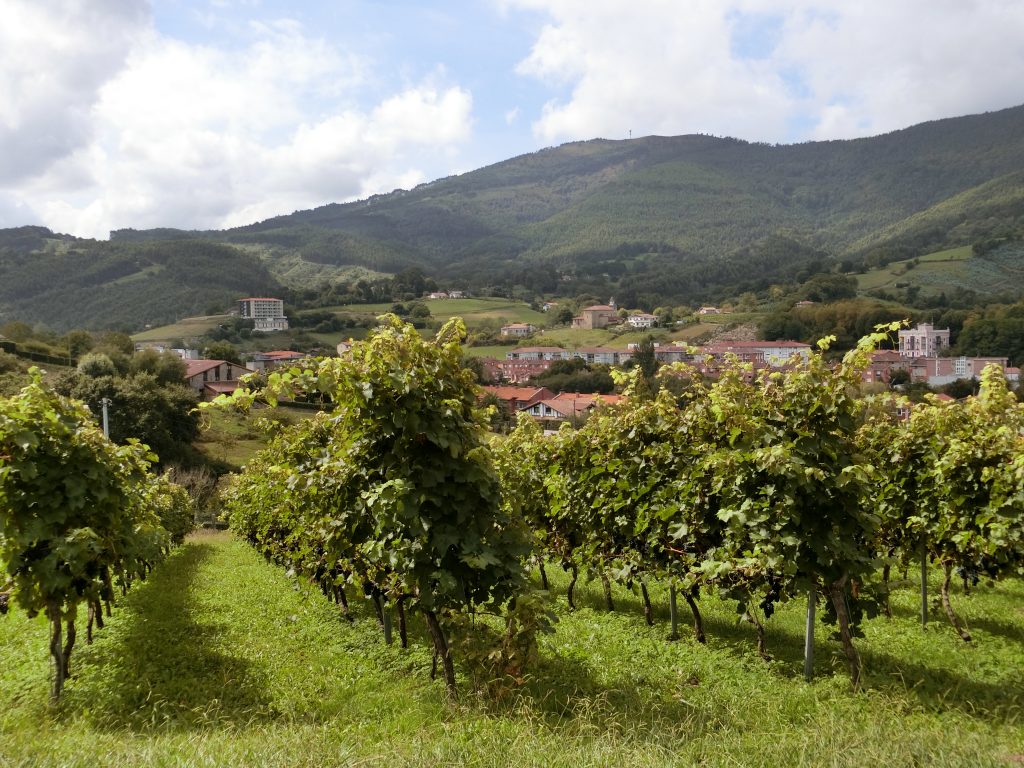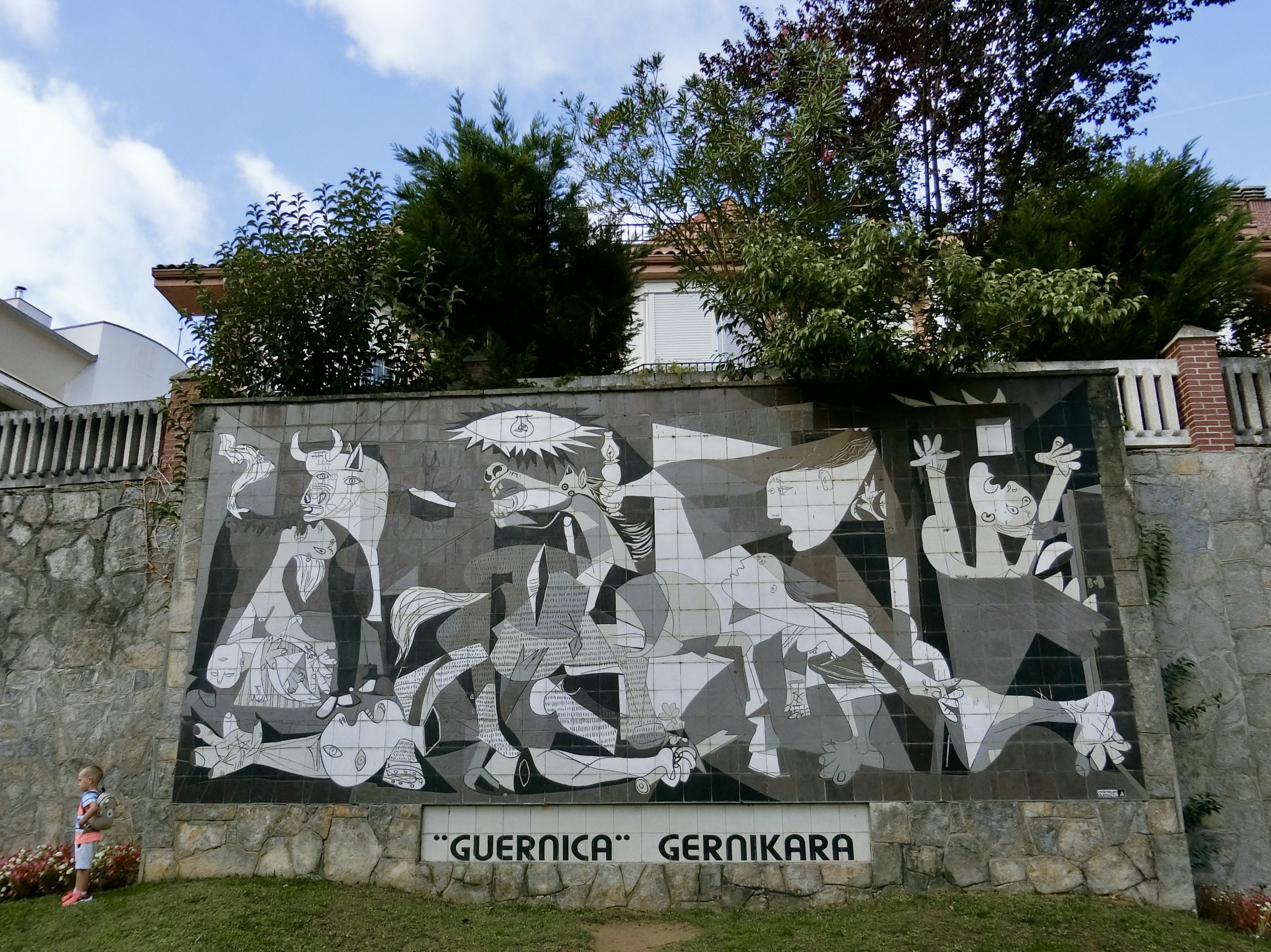This mural is a copy of the Famous Picasso painting of the city being bombed by the Germans.
The painting was never allowed back in Spain while Franco was in power.
The Cork Oak tree is where wine corks come from.
They grow in the areas around the Mediterranean including Spain and Portugal.
The trees must mature to the age of 25 to 34 years of age before the bark is removed by a person called an “extractor” who carefully peals the bark off of the tree.
The life span of a Cork oak tree is around 150 to 250 years and will be harvested around twelve times in its lifetime.
The oldest cork oak in Portugal is the 230 year old Whistler Tree. It is said to be the largest cork oak in the world.
The last harvest from this tree made made enough corks to seal 100,000 bottles of wine.
There are plastic stoppers for wine bottles, but those in the know, believe that wine plugs made of cork are the best.
I will defer to them as I am not an expert on wine corks or much else.
The first or “virgin harvest” harvest of cork bark cannot be used for wine corks.
After the first harvest, the tree will be left unmolested for another 9-12 years.
Cork extractors make around $100.00 dollars a day.
The cork then goes through a months-long process of curing, cleaning and processing and grading.
The cork not suitable for wine corks goes on to become technical corks for industry. Some are used in soundproofing materials, floor tiles and cores for different types of balls.
The corks are then sorted and graded by machine and the human eye.
The best cork is called “gentile” cork and is the most expensive. It will be used to make the corks for wine bottles.
Those corks can sell for as much as fifty cents each.
“Sunrise, Sunset,” my book of short stories is now an Audible book.

The videos from my on stage six minute true story competition from The Long Beach Searches for The Greatest Storyteller event for 2002 and 2003 are on my Facebook and Instagram at R.C. Hand.

